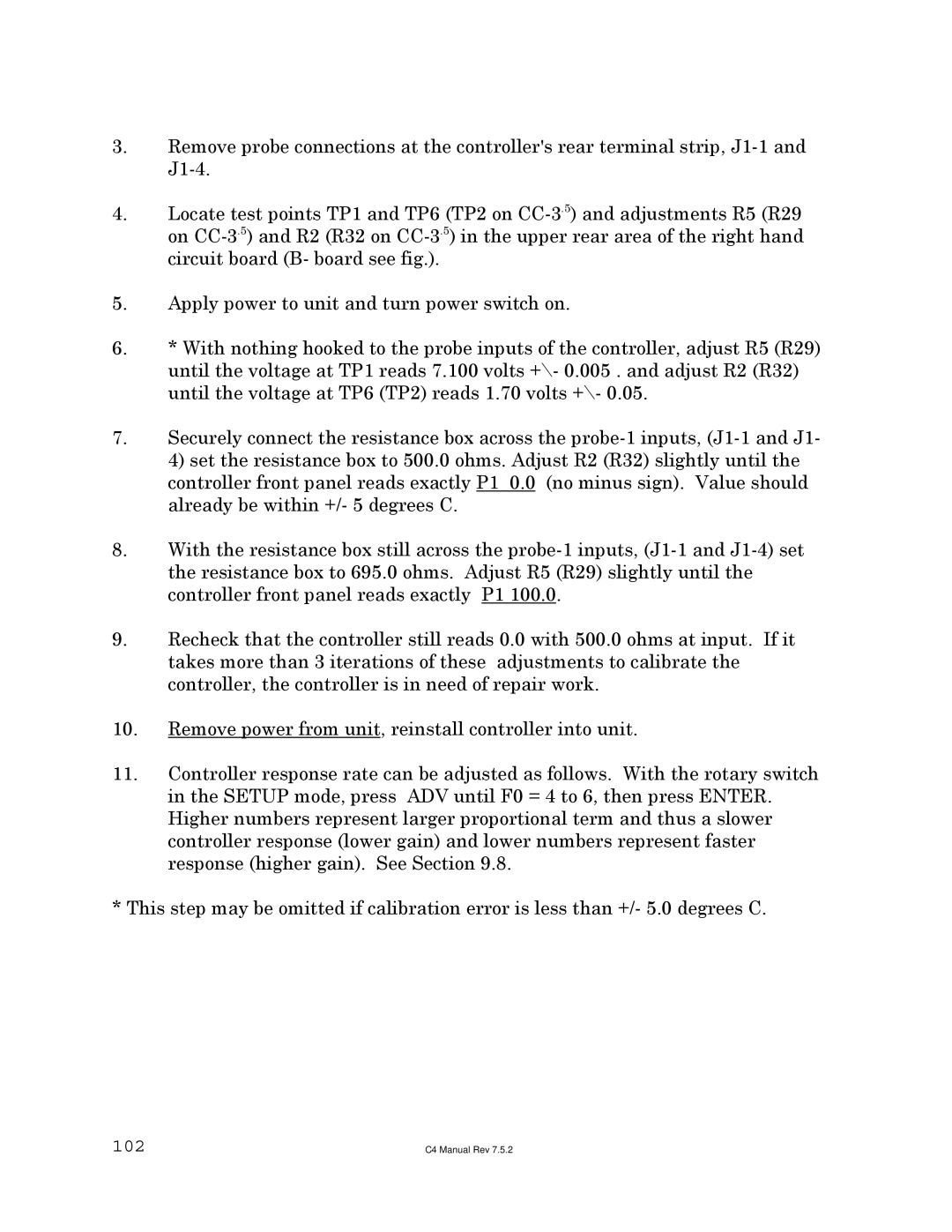3.Remove probe connections at the controller's rear terminal strip,
4.Locate test points TP1 and TP6 (TP2 on
5.Apply power to unit and turn power switch on.
6.* With nothing hooked to the probe inputs of the controller, adjust R5 (R29) until the voltage at TP1 reads 7.100 volts +\- 0.005 . and adjust R2 (R32) until the voltage at TP6 (TP2) reads 1.70 volts +\- 0.05.
7.Securely connect the resistance box across the
8.With the resistance box still across the
9.Recheck that the controller still reads 0.0 with 500.0 ohms at input. If it takes more than 3 iterations of these adjustments to calibrate the controller, the controller is in need of repair work.
10.Remove power from unit, reinstall controller into unit.
11.Controller response rate can be adjusted as follows. With the rotary switch in the SETUP mode, press ADV until F0 = 4 to 6, then press ENTER. Higher numbers represent larger proportional term and thus a slower controller response (lower gain) and lower numbers represent faster response (higher gain). See Section 9.8.
* This step may be omitted if calibration error is less than +/- 5.0 degrees C.
102 | C4 Manual Rev 7.5.2 |
